How to make homemade ginger beer, including photos and a video! This simply recipe is lower in sugar than store-bought ginger beer, contains vitamins and probiotics, and is a healthier alternative to most carbonated drinks because it contains less sugar and no carbonated water.
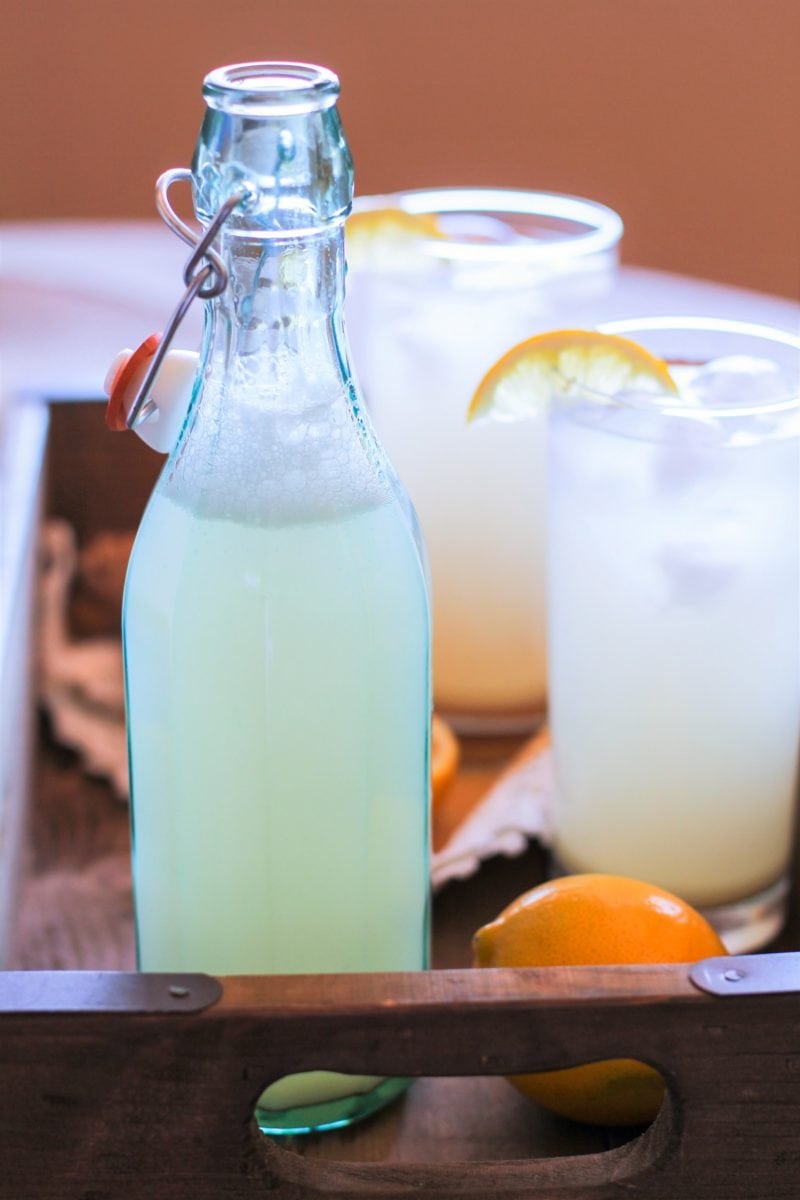
Ginger beer has been all the rage for years, and for a very good reason.
The sweet and spicy beverage is tasty by itself and adds pep to all sorts of cocktails and mocktails. If you’re anything like me, you could add ginger beer to all of your cocktails from now until doomsday.
Most of us think of ginger beer in the context of the Dark n’ Stormy or Moscow Mule and other cocktails that involve the brew. But did you know you can make a stellar homemade ginger ale at home, and not only is it easy, but it’s also great for you?
Because we like to do things in the legit-est of ways, we’re going to put on our DIY cap and learn how to make fermented ginger beer at home.
And it’s going to be healthier than the store-bought version, because that’s the way we roll.
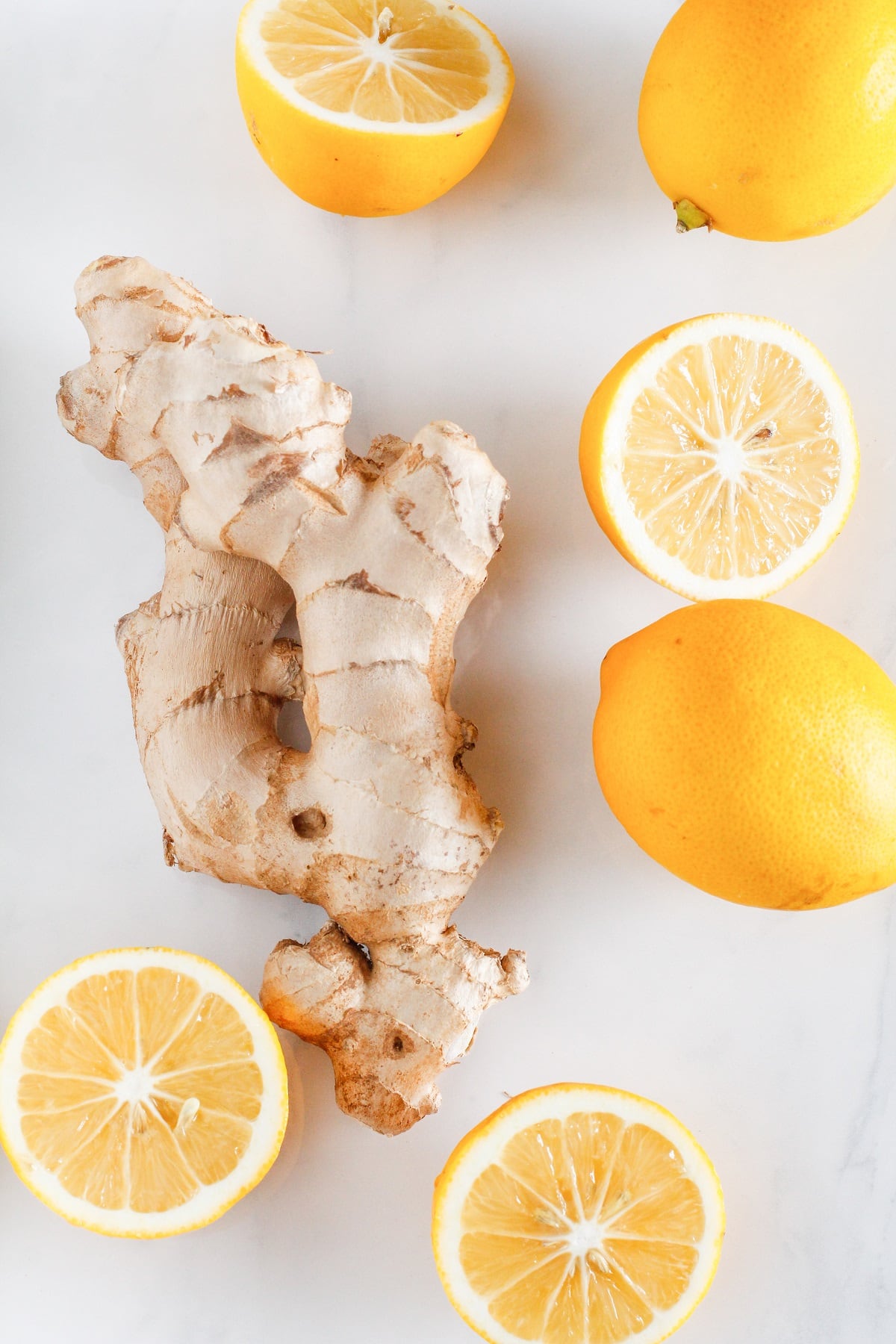
Types of Homemade Ginger Beer Recipes:
There are several ways to make ginger beer.
Method #1: Most people make a simple syrup using ginger, sugar, and water, and then combine the simple syrup with soda water or seltzer water.
While this is the least time consuming way of making ginger beer, and definitely comes out tasting great, we can take it a step farther by fermenting ginger beer into a healthful drink so that it contains less sugar but still tastes sweet.
Method #2: The old fashioned way uses a “ginger bug” or “ginger starter,” which is ginger that has fermented in sugar and water to the point that its natural enzymes and probiotics are released.
Once a ginger bug is formed, it is then brewed into a batch of ginger brew, which results in a probiotic-rich effervescent drink.
This method of making ginger beer takes between 4 and 6 weeks, and is the method I describe in my cookbook, Delicious Probiotic Drinks.
I have also posted a tutorial on How to Make Probiotic Ginger Beer on this site for real ginger beer. Check it out if you’re looking for a beverage with a higher concentration of probiotics.
It is also an alcoholic ginger beer that has a tiny amount of alcohol but can be fermented in such a way that increases the alcohol content.
Method #3 (this recipe): The method I’m sharing in this post uses regular baker’s yeast.
The yeast consumes the sugar as it reproduces, which means that while the finished product tastes sweet, it is actually very low in sugar. Plus, it contains so much delicious ginger flavor!
Which Type of Ginger Beer To Make:
The quickest way is Method #1 listed above, which will require a recipe outside of this blog post.
Whether you choose to make this easy ginger beer recipe laid out in this post or my probiotic ginger beer is a matter of personal preference (and time).
For those of us who want ginger beer quickly, this easy version only takes 3 days from start to finish.
It still has health benefits from the yeast, but because it is not fermented for as long as the authentic version, it isn’t as probiotic-rich.
Is There Any Alcohol in Ginger Beer?
As with any fermentation process, a small amount of alcohol results.
The alcohol content in this ginger beer recipe is very low, almost non-existent.
Still, if you need to avoid alcohol, it is best to be safe and stick with a non-alcoholic ginger beer.
Ingredients Needed for Ginger Beer:
All it takes is fresh grated organic ginger, cream of tartar, lemon juice, active dry yeast, and cold water.
You can replace the lemon juice with lime juice if you’d like. I always go with organic fresh ginger root because it contains plenty of natural bacteria and natural yeasts for the best ginger beer.
Some people add brewer’s yeast (beer yeast) or champagne yeast to this recipe to boost the activity and alcohol content.
I don’t personally have experience with either one so can’t offer advice on how much to use or how to employ it, but if you’re interested in stepping up your brew, they are worth looking into!
I have also heard some people use sourdough starter to make ginger beer, but I have no experience with this either.
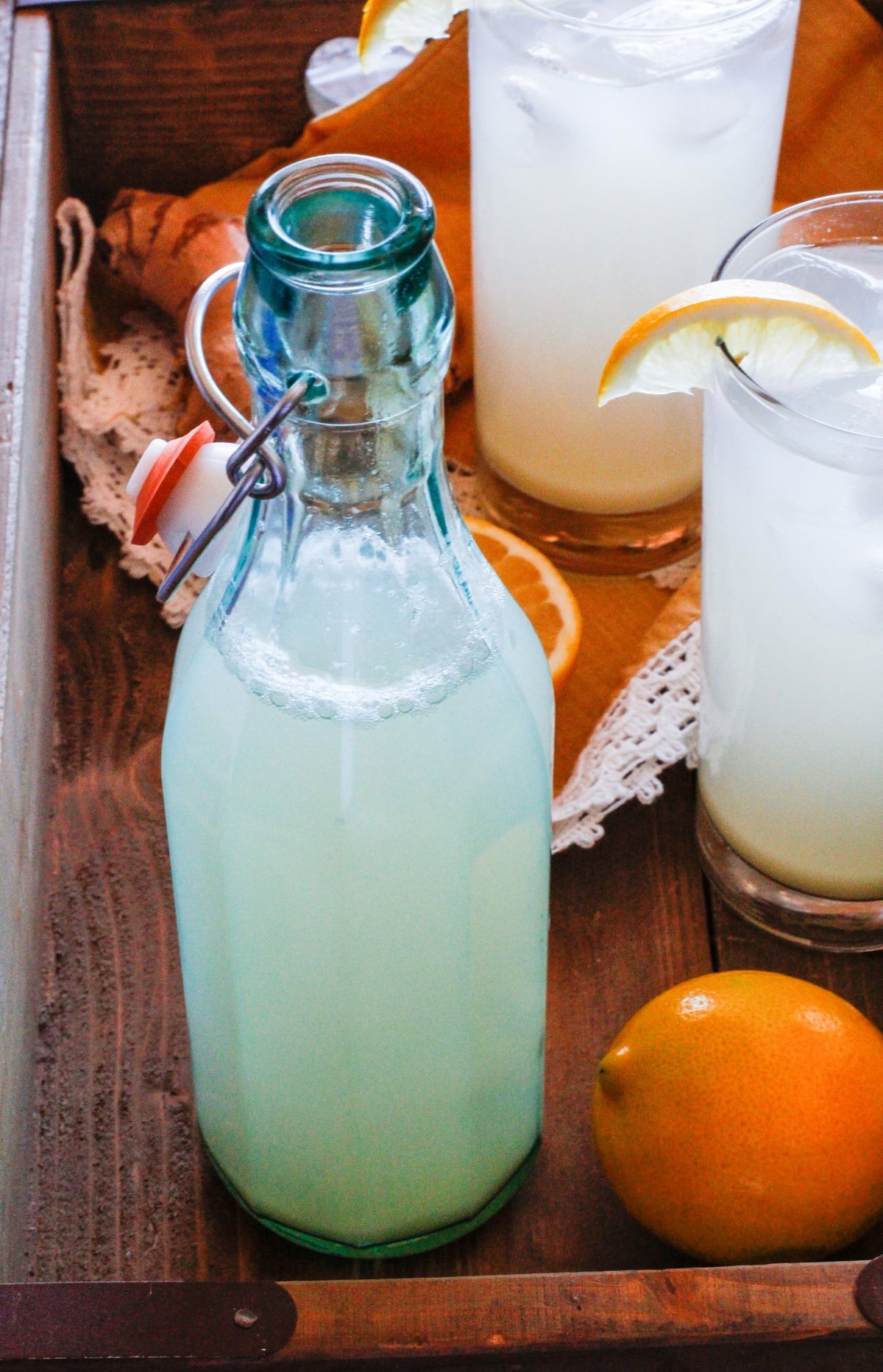
Health Benefits of Ginger Beer:
Ginger is a root and has been used as a natural remedy for upset stomach and nausea across many civilizations for hundreds of years.
It is a natural anti-inflammatory and digestive aid.
Studies show fresh ginger prevents and fights several types of cancer cells including breast, colon, ovarian, prostate, and lung cancer.
Ginger is also known for cleansing the body of toxic chemicals, as it is full of antioxidants.
When fermented, ginger releases enzymes and probiotics, which help maintain healthy gut microflora.
So is ginger beer really good for you?
Based on its ability to lower inflammation, aid with digestion, and boost your body’s immune system, yes, ginger beer is good for you.
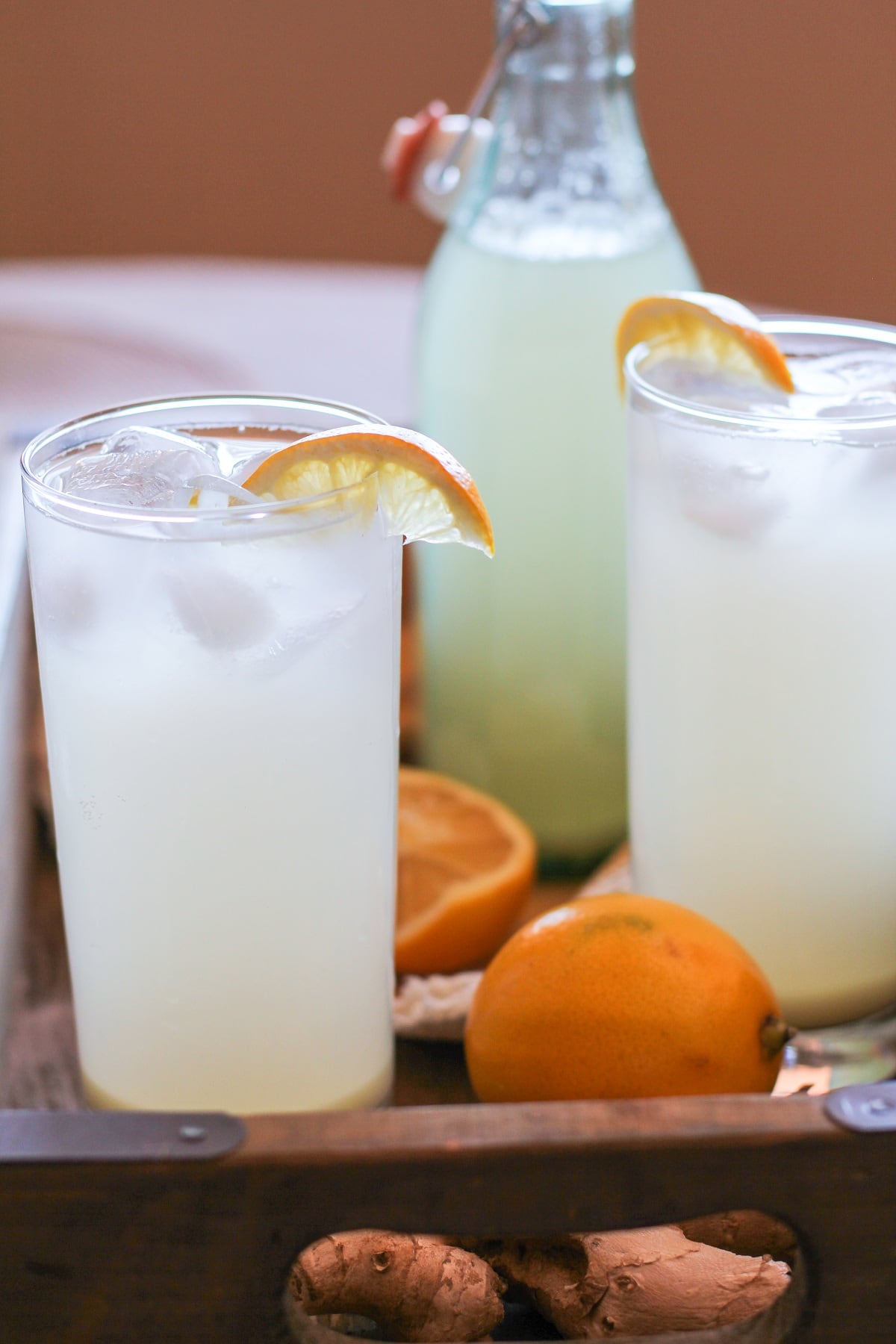
Now that we have all of the details laid out, let’s learn how to make ginger beer!
How to Make Ginger Beer:
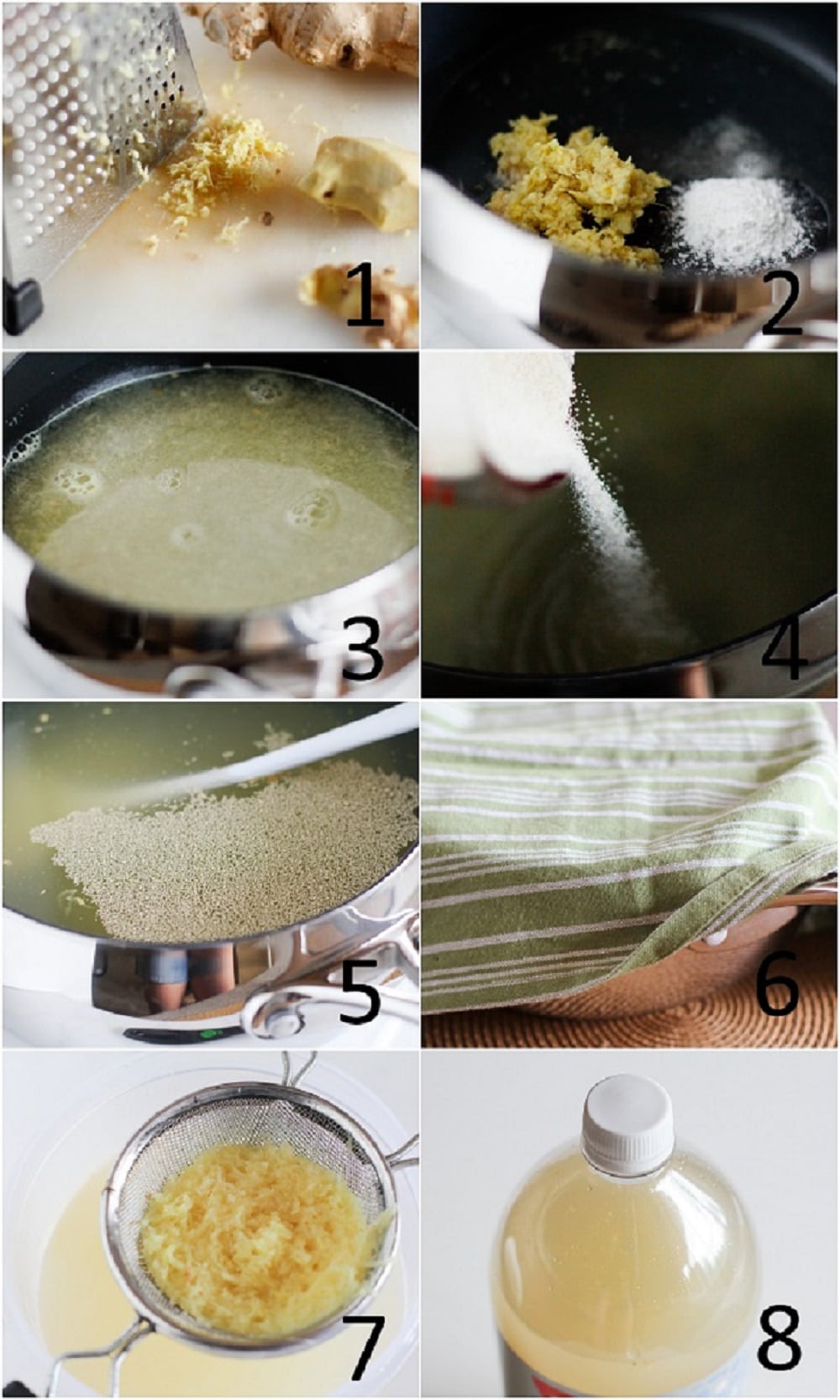
- Peel and grate the fresh ginger using a box grater. You want about 1/4 cup of grated ginger.
- Add the cream of tartar (1/2 teaspoon), lemon juice (1/4 cup), and ginger to a large pot.
- Add 4 cups of water, and bring the mixture to a full boil.
- Turn the heat down to medium, add the sugar and stir until all of the sugar is dissolved.
- Add the rest of the cold water to the pot (5 cups) and allow it to cool to around 75 degrees Fahrenheit (23 degrees Celsius). Add the yeast (1 teaspoon), stir well.
- Cover the pot with a kitchen towel and place in a warm, dark part of your house for 3 hours. The mixture should smell gingery and yeasty!
- Using a fine strainer, coffee filter, or a fine-mesh sieve, strain the liquid into a large pitcher to remove all the bits of ginger.
- Pour this strain mixture into a clean 2-liter plastic bottle. Empty soda water bottles work perfectly, and you can also use 2 one-liter bottles. Do not fill up the bottles all the way because the fermentation will yield carbon dioxide.
Place the plastic soda bottles in a dark place (ideally a warm room or warm place) for a couple of days.
One to three times a day, carefully loosen the caps to relieve some of the pressure without opening the bottles all the way.
The drink becomes very pressurized and fizzy, so skipping this step could result in a ginger beer bottle explosion. True story.
Be very careful in this process and do not point the bottles at anyone’s (or your own) face.
After your brew has finished fermenting, you can either add fruit, simple syrup, juice, or liquor to it to create a customized treat, or drink it as is.
If you choose to bottle the ginger beer in glass bottles, allow the ginger beer to lose much of its fizz prior to bottling, as it will continue to carbonate in the bottles.
This could result in them exploding if there is too much pressure.
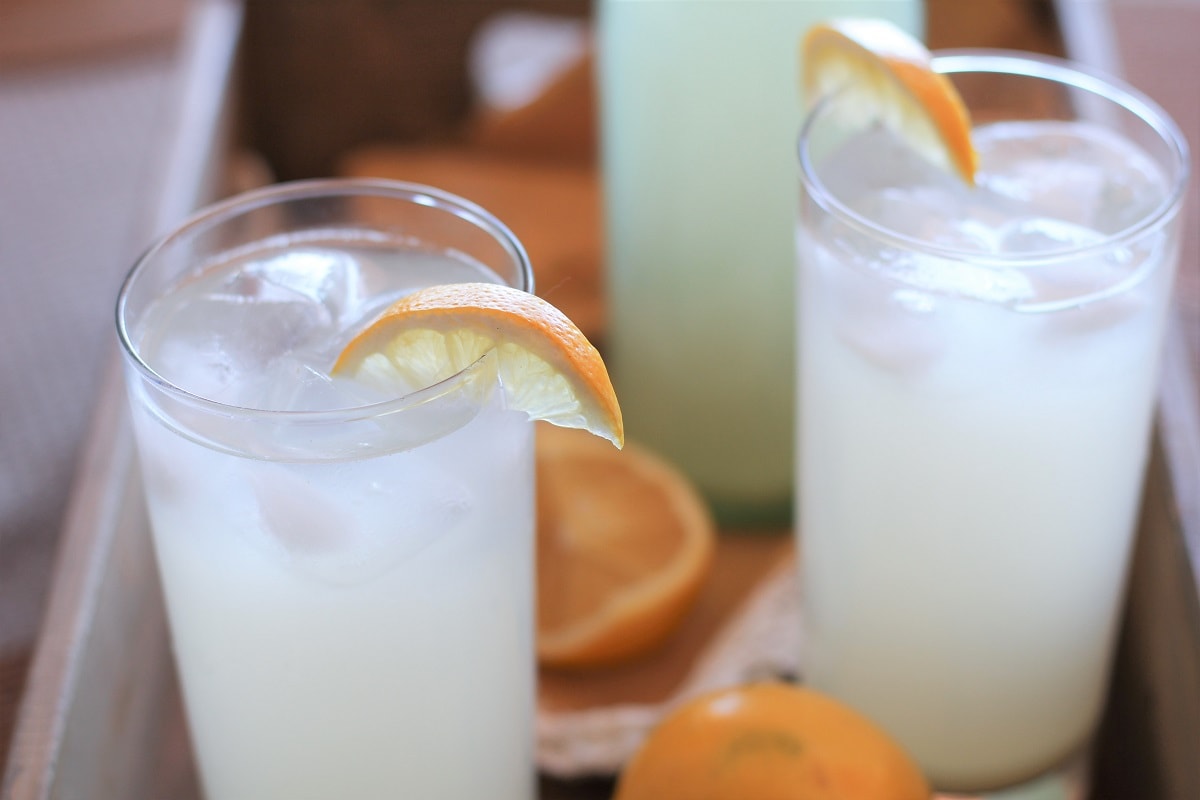
Important Notes:
During fermentation, DO NOT use glass bottles, because the glass can explode under pressure (yes, it builds up that much pressure!), be sure to use plastic bottles with screw tops, as noted in the recipe, so that you can relieve pressure during fermentation.
After 24 hours, you will notice yeast colonies on top of the liquid and settled at the bottom. This is normal!
Once the ginger beer has finished fermenting, glass bottles may be used for bottling and storing.
You must be very careful when opening the bottles because the beverage will still be very carbonated. Always point glass bottles away from your face or anyone else’s face while opening.
The longer you allow the brew to ferment, the more sugar will be metabolized by the yeast, resulting in a less sweet, drier beverage.
I recommend storing finished ginger beer in the refrigerator and always away from direct sunlight.
Depending on the time of year and the room temperature, the brew may take more or less time to ferment. If the room is particularly cool, it could take an extra day or two to finish fermenting, whereas if it very warm, it could take less than 48 hours.
How to Make Sweeter, Spicier Ginger Beer:
If you prefer a sweeter beverage, consider fermenting the ginger beer for one to two days only or simply start with more sugar (about 1 1/4 to 1 1/2 cups instead of 1 cup) than you need.
For spicy ginger beer, start out with double the amount of ginger for a kick. Make your own ginger beer based on your personal taste!
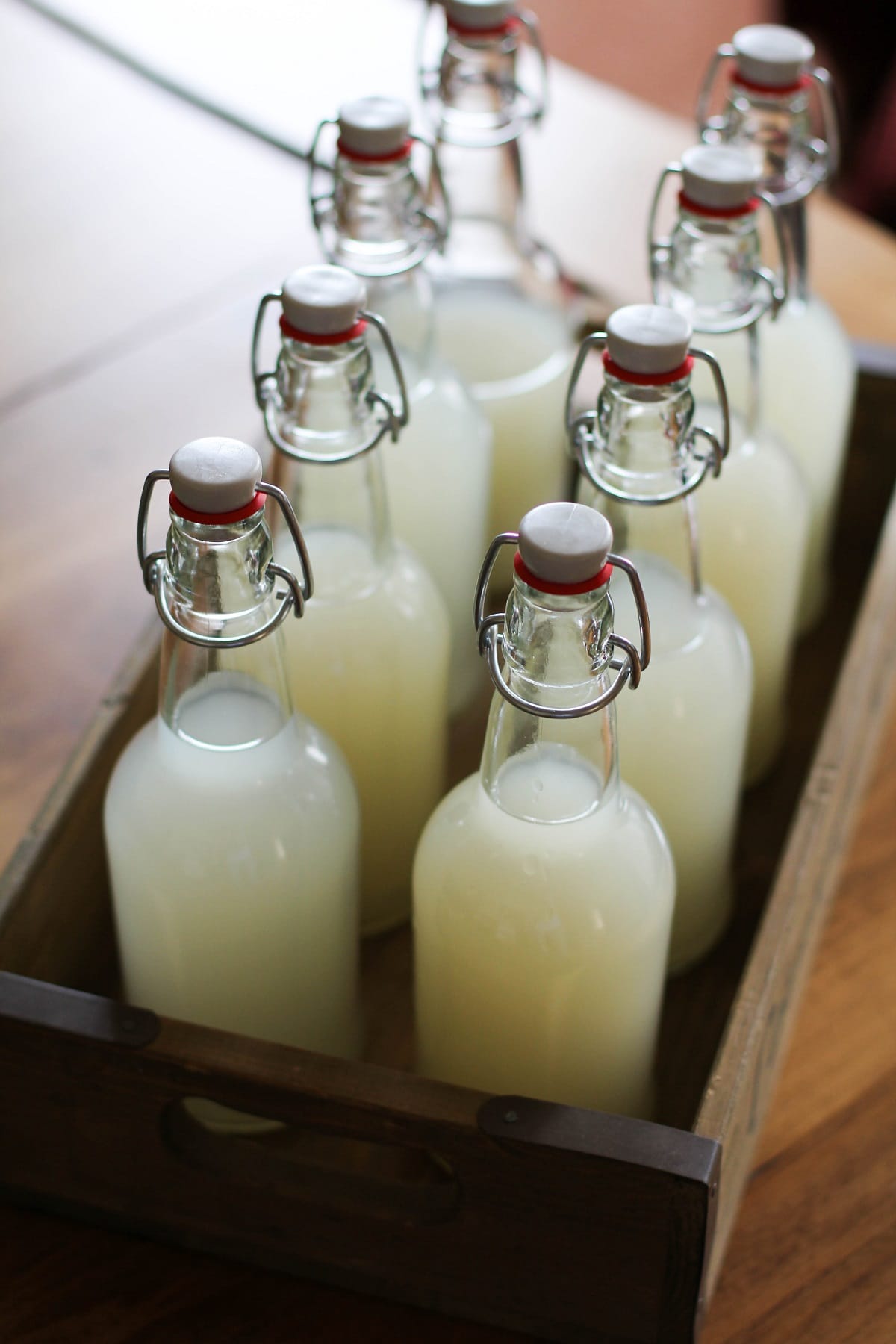
How to Store Ginger Beer:
Once the ginger beer has finished its few-day brewing process, store it in the refrigerator for 10 days, or up to 1 month when left untouched.
You can either store it in the same plastic bottle you used to brew it, or transfer it into glass flip cap bottles. I play it safe and store it in the same plastic bottle I use for fermentation.
Just note that the more you open the bottle, the more carbonation will be lost.
Enjoy the ginger beer as is or use it for cocktails or mocktails! I love it in my Strawberry Moscow Mules and my Cranberry Sauce Bourbon Cocktail!
While I was writing my cookbook, Delicious Probiotic Drinks, I had a great deal of fun with the ginger beer section – for me the challenge of making authentic ginger beer was even more interesting than brewing the perfect batch of kombucha.
Now go forth and ferment you some ginger juice.
My cookbook, Paleo Power Bowls, is now available! CLICK HERE to check it out, and thank you for your support!
If you make this ginger beer recipe, please feel free to share a photo and tag @The.Roasted.Root on Instagram!
Refreshing beverages for a warm day that takes little time, let’s go! Enjoy this homemade ginger ale!
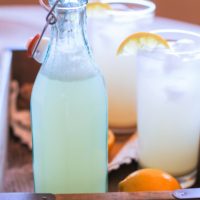
How to Make Ginger Beer
Ingredients
- 9 cups (72oz) spring or well water
- ½ tsp (1.3g) cream of tartar*
- 1/3 cup (35g) fresh ginger peeled and grated
- 1/3 cup (79ml) fresh lemon juice**
- 1 cup (150g) granulated cane sugar***
- 1 tsp (3g) active dry yeast****
You Also Need:
- 1 2-liter plastic bottle with screw top (a large soda water bottle that has been carefully cleaned works great)
- A medium to large sized pot for heating water
Instructions
- Add the cream of tartar, lemon juice and fresh grated ginger to a large pot along with 4 cups of the water. Bring to a full boil.
- Turn the heat down to medium, add the sugar and stir until all of the sugar is dissolved.
- Add the rest of the (cold) water to the pot and allow it to cool to around 75 degrees F (23 degrees C). Stir in the yeast, stir and cover the pot with a kitchen towel. Place pot in a dark place for 3 hours.
- Using a fine strainer, strain the liquid into a pitcher to remove all the bits of ginger.
- Pour the brew into one clean 2-liter plastic bottle (or two 1-liter bottles) but do not fill up the bottle all the way because the fermentation will yield carbon dioxide, causing gases to build in the bottle – you will need to give the liquid some room to build the gas. Place the bottles in a dark, warm room for 2 to 3 days (two days if you want a sweeter ginger beer, and 3 days if you prefer a drier ginger beer).
- Once to three times a day, carefully loosen the caps to relieve some of the pressure (without opening the bottles all the way). Be very careful in this process and do not point the bottles at anyone’s (or your own face). After the ginger beer has finished brewing, store it in the refrigerator to chill. This will also slow the fermentation process.
- Pour in a glass and enjoy as is, or add a splash of rum and lime juice for a Dark n' Stormy. Ginger beer keeps for 10 days – be sure to store in air-tight bottles in your refrigerator.
Video
Notes
Nutrition
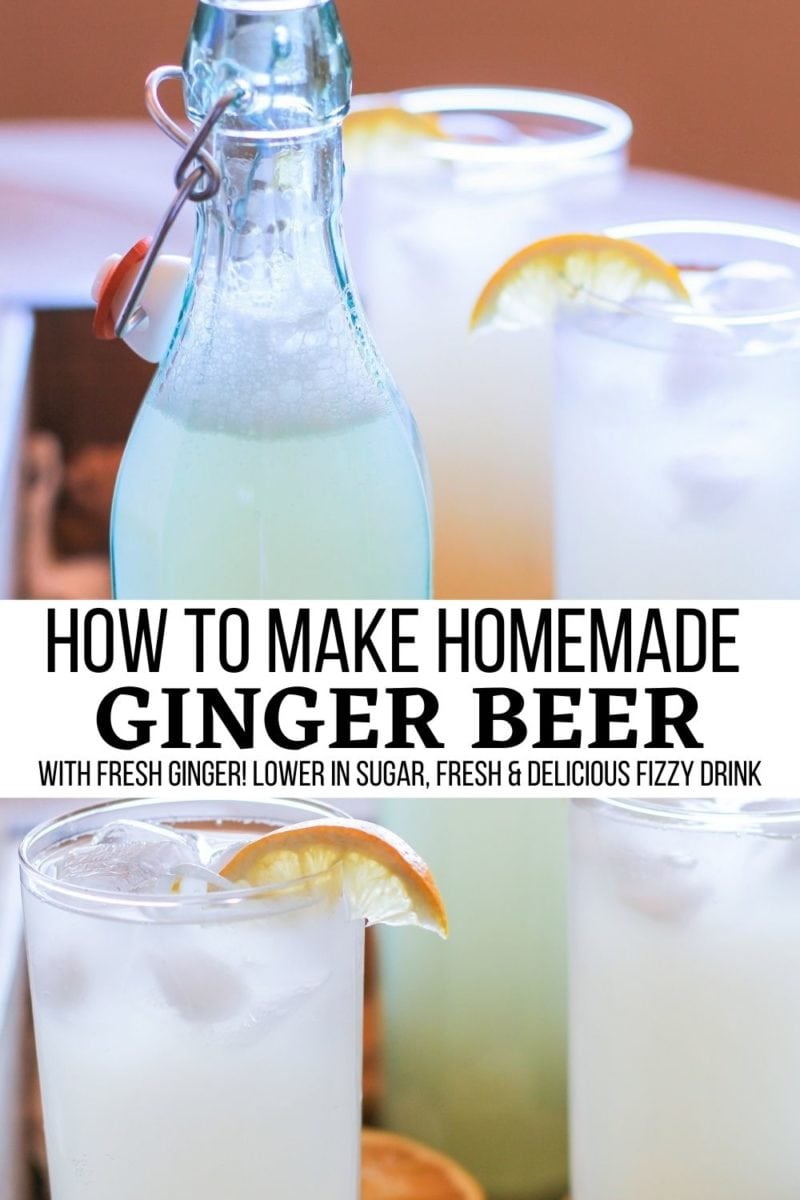
This post contains affiliate links, which means I make a small commission off items you purchase at no additional cost to you.
I originally shared this recipe on September 1, 2014. I updated the information and photos to make the tutorial even better.

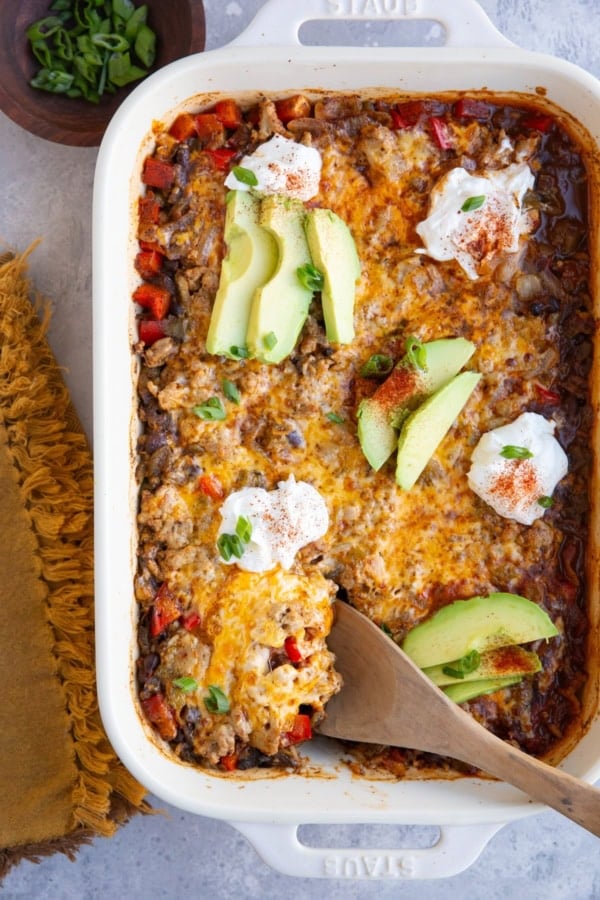
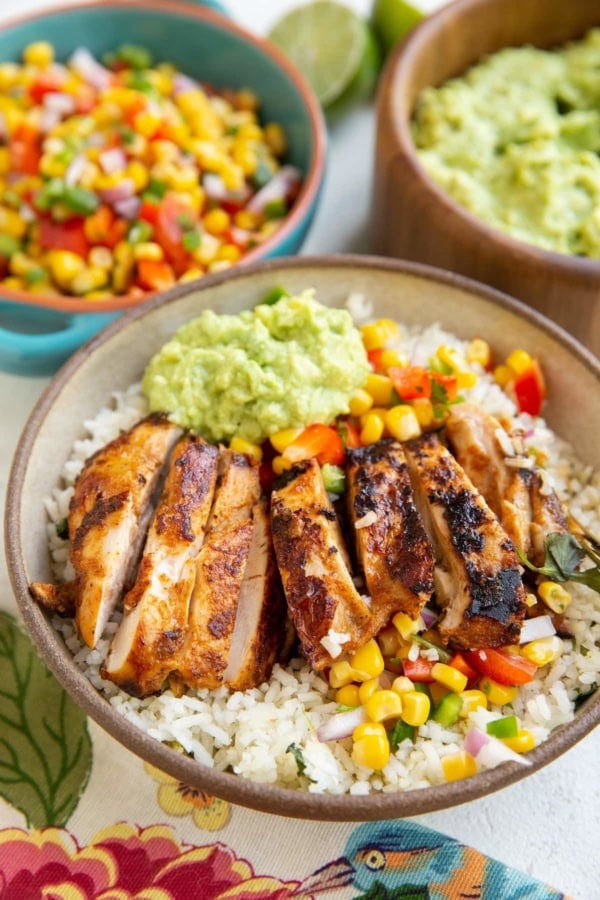
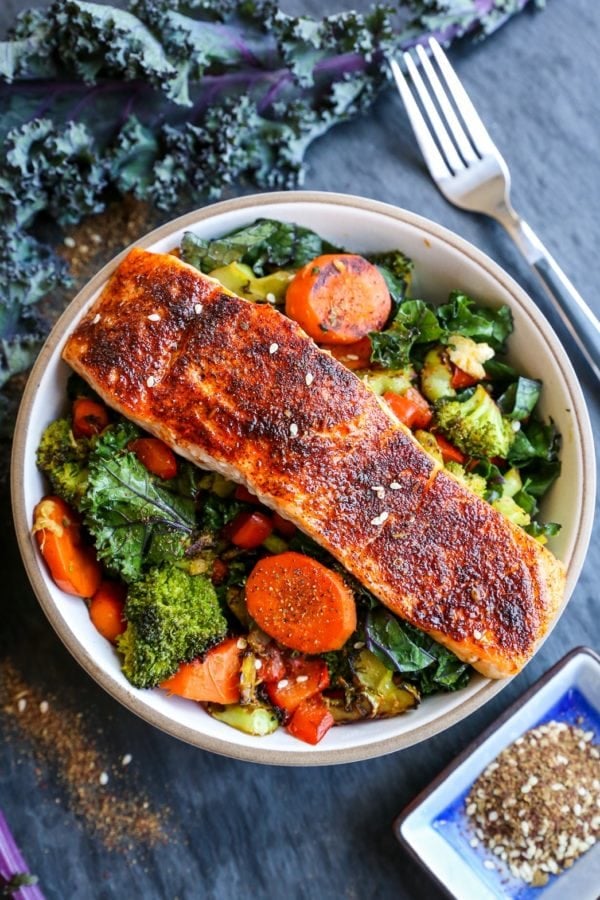
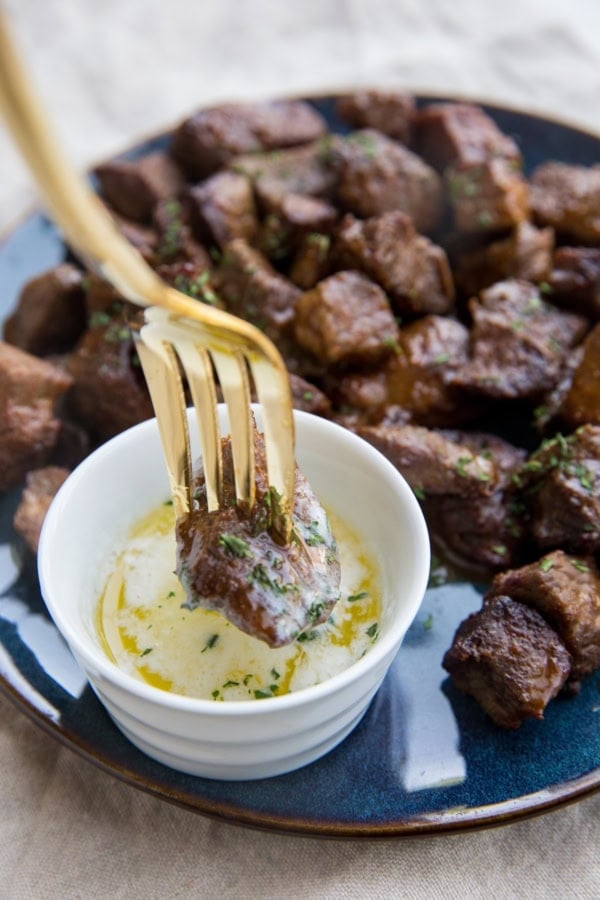









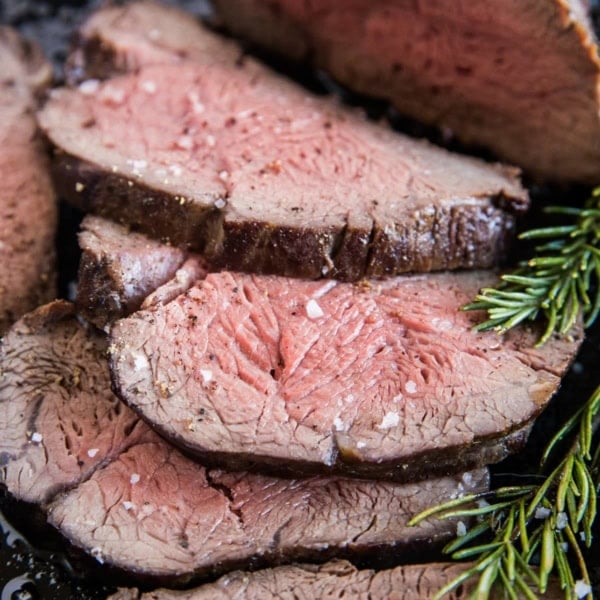
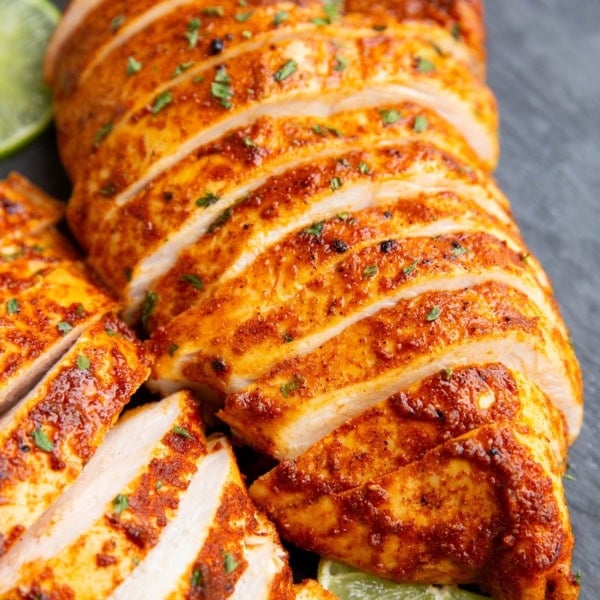
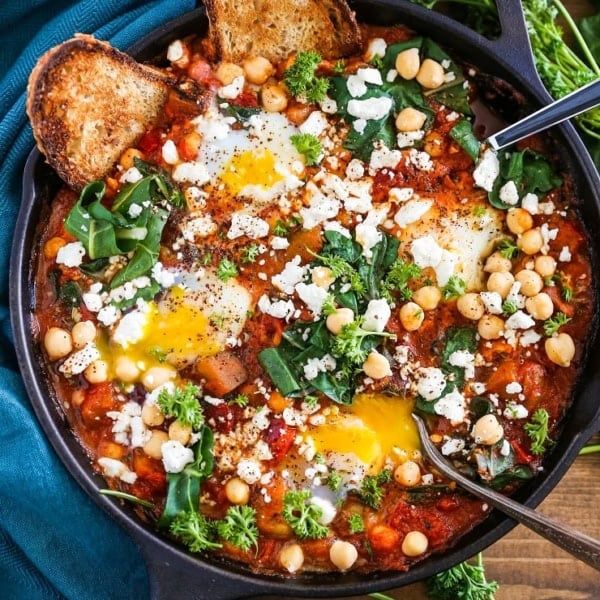
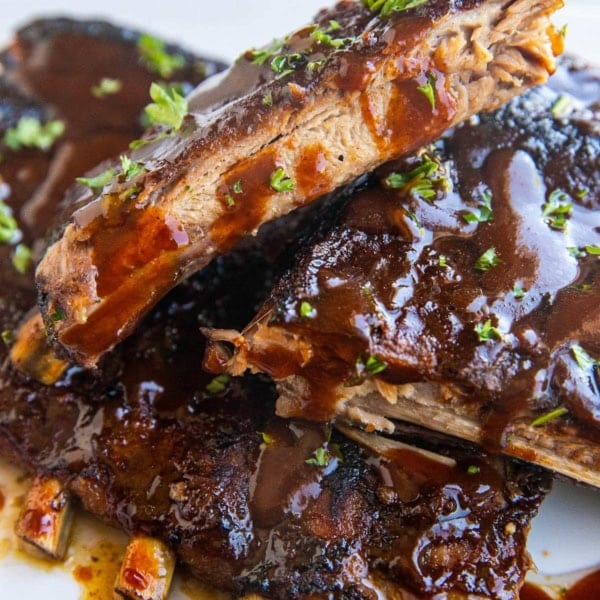
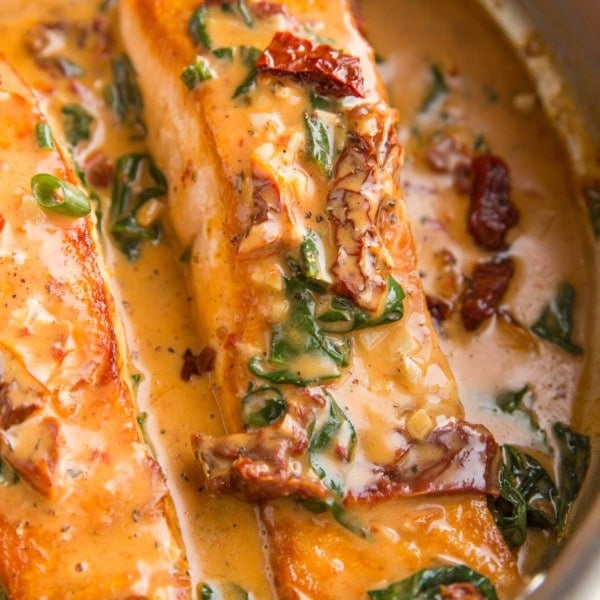
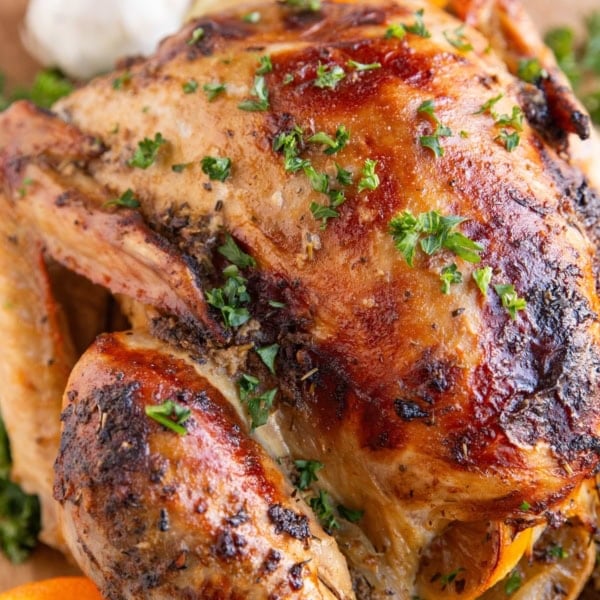
Would it be alright to use lime juice in place of lemon juice? Just asking.
Hi Lyra,
Fresh lime juice should work! I can’t confirm for sure until I try it, but I don’t see why it wouldn’t 🙂 I wouldn’t use the bottled lime juice…I’d stick with fresh. Let me know how it turns out!
OMG…this second batch that I made with fresh lime juice tasted like Fever Tree Ginger Beer. DELICIOUS!!! I had a taste this morning and also tasted Fever Tree. Fever Tree was a tad sweeter. I also added extra ginger.
I also made a 1 and 1/2 times the recipe to almost fill my gallon water bottle. I try to release pressure several times a day. I waited too long yesterday morning and I could not loosen the top (the bottle was bulging). When my husband did it very slowly, the top flew, bottle tipped (he picked up immediately, we lost maybe a cup). Next time I will just make two full batches and store them separately.
Thank you, Julia, for the best recipe ever!!!
I know this is an older post but you can easily make a fermlock using the cap from you bottles then you won’t have to worry about excessive pressure or having to loosen the caps daily. Just a suggestion.
Hi Lyra…just made my second batch using fresh lime juice and I like it more than the lemon juice recipe. Just tasted this morning, DELICIOUS!!!
Hi Dorothy, did you use the same amount of fresh lime as lemon ?
Almost the same amount. I needed maybe another 1 – 2 more limes. Next time I will get a lot more limes so that I will have a more citrus flavor. If you’re a tad under, it will be delicious.
I am interested in making this at my bar, for dark and stormy and other cocktails, but i am worried about it’s shelf life. How long can I keep a bottle in the fridge?
Hi there! So happy to hear you want to make homemade ginger beer for your bar…I’ve actually been looking for a bar that does this and there aren’t any in my area. That said, I’ve stored ginger beer in my refrigerator for 2 weeks and believe it or not, it stayed fizzy. Because you’re serving it in a bar, I wouldn’t recommend taking chances, so I’d say keep it for 1 week. Although hopefully you’ll sell it so quickly that it’ll fly off the shelf 😉 Best of luck!
Hi! Just found this great recipe! Do you have any information about how much sugar is left in this once done? My wife is quite heavily into calorie counting and wants to know!
Hi Alex, That’s a great question!…But a tough one. The straightforward answer is you’d need a specific tool that measures the residual sugar in order to have a clear answer (I believe it’s called a refractometer or a hydrometer). A more vague answer is theoretically, there should be very little residual sugar, if any. The resulting amount of sugar depends upon how much of it the yeast has metabolised.
You can allow the ginger beer to ferment for a longer period of time (an additional 1 to 2 days…still being very careful to continually release some of the gas each day) in order to ensure you end up with as little sugar as possible, but you also need to be mindful of the fact that yeast need sugar in order to survive. Allowing the ginger beer to ferment for too long will kill the yeast. Also bear in mind, the longer it ferments, the “drier” the ginger beer, meaning the less sweet it will taste.
The ratio of sugar necessary for fermentation is a fine balance – on the one hand, you need enough to feed the yeast so that they get the job done and don’t die, but on the other hand, too much sugar can kill the yeast as well, and/or result in a beverage that is high in sugar. If your wife is concerned about the amount of sugar she consumes, you can use coconut sugar for the recipe versus cane sugar. It works just as well, but coconut sugar is lower on the glycemic index than cane sugar. I hope this is helpful! Let me know how your batch(es) turns out and enjoy the rest of your weekend!
I have no idea how much sugar is left either. I would say though, you could experiment with less sugar and then add back sugar after the fermentation. You could also add a no calorie sweetener at the end to taste.
I made a similar recipe without your warning of putting it in a plastic bottle and releasing the pressure. Needless to say, it created glass all over my kitchen.
If you release the pressure daily for 2-3 days, how long will the ginger beer stay carbonated after that? Is this something that needs to be made a day or two before using it, a week, month, etc.?
Hi Mike, the ginger beer will stay carbonated for upwards of 2 weeks, even after opening the bottles multiple times. Hope you enjoy!
Made this recipe three times now and I am finally getting good at it. I made one change. I didn’t like the bread flavor from the “baker’s yeast” so I changed to “SafAle US-05”. This takes most of the bread aroma away and leaves a good solid ginger beer. It is not as aggressive during fermentation but works well enough for me.
?Question? Does anyone have a good Root Beer recipe?
Martin, thanks for this suggestion! I just made this and, while I really want to like it, it is too yeasty for my taste. It’s a wonderful recipe that carbonates well, but I think I may try it again with that yeast you suggest and certainly more ginger because I love a kick. I also strained mine through a coffee filter before refrigerating because I didn’t like the grittiness the yeast left behind, and that worked quite well.
75 is in C or F?
Thanks
Fahrenheit 🙂
Hello,
I’ve been looking for a recipe like this… nice and simple! So, thanks for that!
My questions is, assuming I follow you recipe correctly (which I am planning to do), could I use a demijohn as replacement for the plastic bottles?
I have a few of these hanging around from a few years back making wine and rather use this method than having to buy plastic bottles and “consume” the sugar liquid in them!
Thoughts much appreciated! 🙂
Hi Martin, You could use a demijohn and leave it uncovered, although I don’t think the ginger beer will get as fizzy if you do. Using a sealed container traps the gasses that are emitted through the fermentation process, thereby causing the drink to become naturally carbonated. I wouldn’t recommend using glass and sealing it airtight, as the bottle(s) will likely explode from the pressure. Let me know if you try the ginger beer using a demijohn and whether or not it gets fizzy! Best of luck!
I’m wondering the same thing, as I already have vapor locks and glass bottles I used for making mead. Can I use a vapor lock on my glass bottles or can I use a balloon over the mouth of the bottle to handle the built-up pressure?
Hello Julia,
Regarding inquiry on May 4, 2015 at 10:56, from a viewer on the Ginger Beer recipe using specific ingredient, “Cream of Tartar”. No reply was noted. Please reply as to this ingredient(s) purpose. Thanks and Regards, {;>)
Thanks for the heads up, Patricia! I just responded to Amelia. 🙂
Hi there,
I’m in the process of making my first batch and things are going well! I have two bottles that are bubbling and building pressure like crazy, but my third bottle doesn’t seem to be air tight for some reason. It bubbles, but it doesn’t require any gas to be released like the other two.
So, my question is why the need for airtight plastic bottles, and is there any harm to having one plastic bottle not be air tight if the beer still bubbling?
Thanks for your help!
The purpose of sealing the bottles is to allow the gasses (which are a biproduct of the yeast fermenting) to naturally carbonate the beverage. The yeast will still ferment and become “effervescent” if the ginger beer isn’t tightly sealed, although it won’t be as fizzy as the ginger beer that ferments in an air-tight container. So Basically, it’s a matter of preference for how fizzy (and fermented) you like your ginger beer to be. Hope this helps 🙂
Hi, I would like to try this but I’m a little confused. How do you know when it’s done fermenting and you can stop releasing the gas to avoid an explosion? Thank you!
Hi Judy,
Give the ginger beer 2 days if you want a sweet ginger beer, and 3 days if you want a dry ginger beer (releasing the gas 2 to 3 times per day). Let me know if you have any other questions! Cheers!
I’ve make the ginger beer recipe here twice. Once, I followed the instructions to a tee, i.e., peeled and grated the ginger and used fresh-squeezed lemon. The second time, I wanted to do less work and see if shortcuts would affect the taste at all, so instead of grating the ginger I just used a “chopper” to basically mince the ginger into fine pieces (and I did not peel it first), and I used bottled pre-squeezed lemon juice. (The two batches were about 3 weeks between each other and used the same ginger root and same envelope of yeast.) In the end, I could not detect a difference between the two batches — they were both tasty. However, in the future I might try doubling the ginger since I like it with lots of bite.
i would never make this if i had to sit and grate ginger for that long. luckily it’s WAY easier than that. you pop a good chunk of ginger (about the size of your palm) into the blender with a bit of water and strain that. it takes 30 seconds instead of 15 minutes. also, don’t bother using all these random yeasts and things intended for other beverages, b/c there’s a probiotic culture called “ginger beer plant” that is specifically intended to ferment ginger sugar water for you and is reusable (it grows, in fact!) and allows you to make a new batch of ginger beer every 3 to 7 days and has a bunch of other good probiotic stuff in it other than just yeast (bacterial strains, too). it’s probiotic rich and doesn’t take weeks. ginger beer plant (and the ginger beer it makes) is my new favorite thing!
Hi Jamie, Thanks so much for your input. Yes, you can make naturally fermented ginger beer without using yeast, but it takes quite a bit longer than the method I have described in this post. In my cookbook, Delicious Probiotic Drinks, I give instructions on how to make a ginger plant and a continuous batch of ginger beer using a ginger pant. The purpose of this post was to show how to make a very simple fail-proof ginger beer in only a few days.
Thanks for the tip on blending the ginger – this is a brilliant idea and much quicker than grating. 🙂
I don’t think you understand. Ginger Beer Plant is a very old culture that was used to make ginger beer in households all over England for many years. It fell out of favor in the 1940’s, probably because of the lack of sugar during WWII, but it is still available. It is not really a plant, it is a symbiotic colony of bacteria and yeast and it grows, similar to Tibicos (water kefir grains). The Yeast makes the alcohol, and the bacteria eats some of it and makes probiotics. The beer is cloudy and a bit thick, not very sweet, only a little alcoholic, a little probiotic, very carbonated, and really wonderful. Personally, I like it hot!
I saw a traditional ginger beer recipe that uses all the same ingredients you do, including active dry yeast, but not cream of tartar/ baking powder. What’s the purpose of adding cream of tartar ? Thanks ! (:
Hi Amelia,
The cream of tartar reacts with the sugar (creating what is called “inverted sugar”), which in turn allows the yeast to feed on the sugar and ferment. So in essence, it helps with the fermentation process and also gives added depth of flavor. That said, the recipe will work without cream of tartar. Let me know if you have any more questions!
I’m wondering if the inverting works in this case.
All the guides I’ve read say the temperature of the mixture needs to reach at least 114 C for the reaction to take place. This doesn’t seem to be a problem for dedicated inverting mixtures because you have a much higher concentration of sugar in the water which raises the boiling point.
I used a similar recipe to this but I couldn’t get the temperature above 98 C since it was still mostly water.
It doesn’t do any harm to try, and worst case scenario the acid will still help the yeast grow since yeast prefers a slightly acidic environment, but I’d be curious if anyone knows how to test if inverting works below 100 degrees.. If we want inverted sugar, do we need to make it before adding it to the ginger beer mixture?
Hi 🙂
have you ever noticed the yeast sediment turning green after 2 days? I am afraid this could be mold and might be toxic?
After having a more detailed look i found out it is the plastic bottles which have a green bottom which make the sediment look green.
Sorry for the confusion, that’s embarrassing 😀
Greta question. I made a double batch and totally forgot to add this step! So glad you asked. Thank you!
Same question! Do you drink the sediment at the bottom, or strain it out?
I drink it. Typically when I open a bottle of ginger beer, the sediment on the bottom bubbles up toward the top and mixes in with the rest of the ginger beer. There’s no texture to it that I’ve detected 🙂 Hope you enjoy and let me know if you have any other questions! xo
Coffee filters? ?
I was wondering if it’s ok to drink all the yeast sediment that’s in the bottom of the ginger beer and also if there is an easy way to strain it out
Has anyone experimented with different sugars? I like to use lower glycemic sugars like coconut sugar, I’m just wondering if other sugars will still ferment properly?
Hey Doug, I used a Low GI cane sugar for mine accidentally and it worked perfectly.
Hmm. OK, I’m going to try it with blonde coconut sugar. Probably this weekend, so if I do I’ll post results.
Thanks, Doug! Can’t wait to hear how it turns out!
Well, I’m back with an update. I haven’t found the time to do an actual brew, but had been considering trying a quick brew version where I create a simple syrup, flavor it, and mix it with club soda or tonic water. Here is my initial results. I used 1 cup blonde coconut sugar (it’s low glycemic) to one cup filtered water. Boil for 5 minutes or so, all sugar must be completely dissolved. I would tip the pot to see the bottom to make sure there are no sediments or granules remaining. Once boiled, add a 1/4 cup of lemon juice (I boiled it some more just to be sure). In a separate pot I boiled about a cup’s worth of shredded ginger for 15 minutes (note, future batches I’m going to use my masticating juicer to extract the ginger juice instead of boiling the gratings, much more efficient and you get ALL of the juice highly concentrated). This I strained into the simple syrup mixture, and let it cool for about 10 minutes. This is your base ginger syrup. I combine about 2 – 3 oz with about 6 – 8 oz of club soda. I couldn’t wait for it to get cold, so I had some in my freezer cup, and shared it with the family, and it was a hit! The ratio of syrup to club soda might vary, just vary to taste. This version comes across with a high ginger bite, and a slight molasses flavor from the blonde coconut sugar. It is brown, but tastes really great! Will be experimenting further!
Doug, THAT is AWESOME!!! I’ve been very much wanting to try this but don’t consume sugar! (I really shouldn’t consume yeast either but this now sounds just too super to pass up!!) THANK YOU for posting a recipe for a coconut sugar version!! (May I ask which brand is considered “blonde” as I wasn’t aware of different types, just that some brands of coconut sugar taste slightly different?) Once again, Yay!!! I found this site for a different recipe and am so thrilllllllled!! Thank you to Julia too!! <3
Julia, just finished and tasted this ginger beer and it’s phenomenal!!!! Can’t begin to thank you enough! I started the “leftover culture” and keep feeding it so we’ll
see how it goes. Now back to my ginger beer… 🙂
I’m so happy to hear it, Lesli! It’s so tough to beet a nice homemade ginger brew!! Enjoy! xoxo